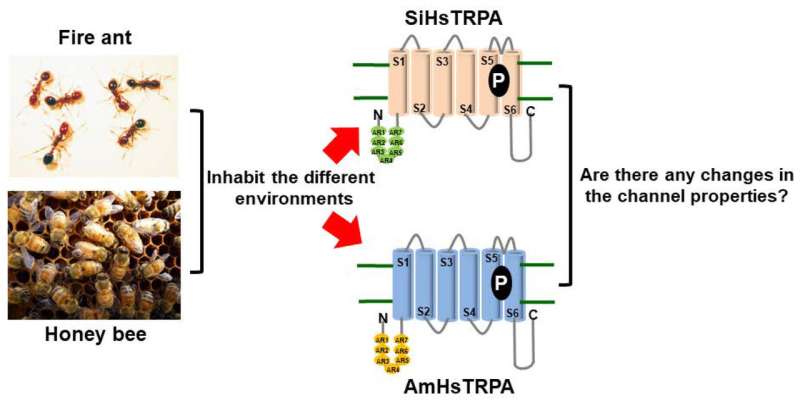Controlling fire ants with natural compounds

New research published in eNeuro has identified natural, plant-derived that repel fire ants. These compounds, including one found in cinnamon, work by activating a type of ion channel highly expressed in the antennae and leg of one of the world's most invasive insect species.
Native to South America, the red imported fire ant (Solenopsis invicta) has spread in recent decades across the world to countries such as the United States, Australia and China. Efforts to control the species, which can disrupt agricultural production and sting people with its venom, have been largely unsuccessful.
Tatsuhiko Kadowaki, Makoto Tominaga and colleagues investigated the fire ant transient receptor potential (TRP) channel and found that it functions as a sensor of harmful conditions in its environment. Comparing it to the well-studied honey bee TRP channel, the researchers demonstrate that although it is similarly activated by heat, only eight of the 24 compounds that activated the honey bee TRP channel activated the fire ant version. Since the genes encoding this channel in each species are derived from a common ancestor, this suggests that the fire ant TRP channel has evolved to be less sensitive to the compounds that activate the honey bee TRP channel.
More information: The red imported fire ant, Solenopsis invicta HsTRPA functions as a nocisensor and uncovers the evolutionary plasticity of HsTRPA channels, eNeuro, DOI: 10.1523/ENEURO.0327-17.2018
Provided by Society for Neuroscience





















